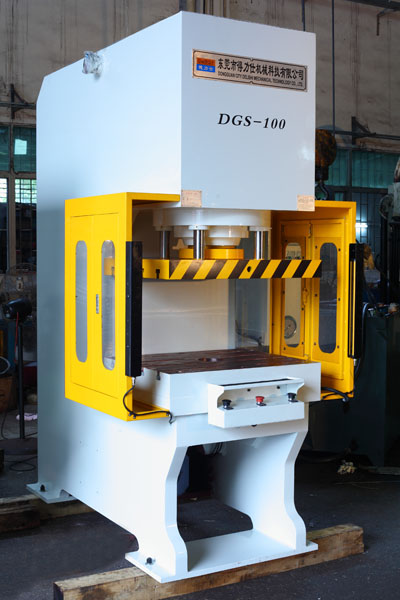
Following are the basic requirements for the working material of a single-column hydraulic press
● Have appropriate fluidity and low compressibility to improve transmission efficiency
● Can prevent rust
● Have good lubrication performance
● Easy to seal
● Stable performance, long-term operation and no deterioration.
The single-column hydraulic press is changed to emulsified oil with a small amount of emulsion added to water to enhance lubricity and reduce rust. Oil has good lubricity, corrosion resistance and appropriate viscosity, which is beneficial to improving the performance of single-column hydraulic presses. Its lubricity and corrosion resistance are close to those of oil, and its oil content is very low, making it difficult to burn. However, water-based emulsified oil is relatively expensive, which limits its promotion.
Working principle of single column hydraulic press
Single-column hydraulic press is a device that uses liquid to transmit pressure. Liquids obey Pascal's law when transmitting pressure in a closed container. The hydraulic control system of a hydraulic press consists of a power mechanism, a control mechanism, an actuator, an auxiliary mechanism and working materials. The power mechanism generally uses an oil pump as the power mechanism, usually a positive displacement oil pump. In order to meet the needs of the movement speed of the implementation mechanism, one oil pump or several oil pumps are used. For low pressure (oil pressure below 2.5MP), use a gear pump; for high pressure (oil pressure below 6.3MP), use a vane pump; for high pressure (oil pressure below 32.0MP), use a plunger pump.
Hydraulic press machines usually refer to hydraulic pumps and oil motors. Hydraulic pumps and hydraulic motors are both energy conversion devices in the hydraulic system. The difference is that the hydraulic pump converts the mechanical energy of the driving motor into the pressure energy of the oil, which is the power system in the hydraulic system. The oil motor converts the pressure energy of the oil into mechanical energy and is the execution device in the hydraulic system.
Single-column hydraulic press was called C frame press, also commonly referred to as gap frame presses, are characterized by their unique frame style, resulting in the formation of a“C” around the bolster plate. Delishi offers C frame presses in a variety of bed sizes and tonnages with servo-electric or hydraulic actuation. Increase your production efficiency and process repeatability with servo!


 +86-13509801050
+86-13509801050
 E-mail
E-mail
